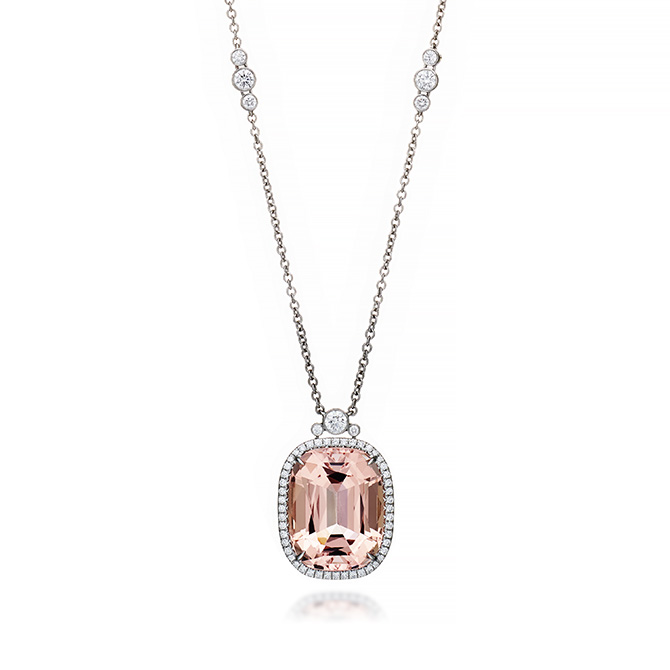I recently became a fan of Florence Pugh, and she has captivated me. The talented 26-year-old English actress delivered amazing performances as a haunted housewife in “Don’t Worry Darling” and as a nurse in Netflix’s period piece “The Wonder”.
I’m mentioning her acting roles in this jewelry review because I believe great actresses not only take risks in their on-screen roles but also on the red carpet.
Last week, Florence did just that at the British Independent Film Awards. She wore a stunning blush pink Rodarte lingerie-style gown with a matching tulle cape, and to complete her look, she adorned herself with not one, but two impressive Tiffany Legacy stones. Her diamond and platinum necklace featured an 18-carat Morganite, while her diamond and platinum earrings showcased pear-shaped Kunzites.
Now, let’s dive into what exactly is a Tiffany Legacy stone.

The history of Tiffany is closely connected to colored gemstones, thanks to its founder Charles Lewis Tiffany, who had a deep passion for these gems and ingrained this love into the business.
One of the ways Mr. Tiffany accomplished this was by hiring an exceptionally talented gemologist named George Frederick Kunz. Kunz, with his dazzling personality, traveled the world sourcing precious gems, oversaw the cutting of the Tiffany Diamond, actively participated in the gem community, and authored numerous books and articles. He later became known as the Father of American Gemology.
George Frederick Kunz had one especially ardent follower of his gem-loving ideas – J.P. Morgan. Morgan, a financier, was not only a gem enthusiast and collector but also a significant client of Kunz’s gem discoveries.

Kunz, being an educator at heart, managed to convince Mr. Morgan to donate his impressive gem collection to the American Museum of Natural History in Manhattan. Morgan’s generous donation led to the establishment of the Gems & Minerals Hall, which became world-renowned.
As a tribute to Morgan’s generosity, Kunz proposed that a rose beryl discovered in Madagascar in 1910 be named Morganite during a meeting of the New York Academy of Sciences. The committee agreed, and the beautiful stone has since carried the banker’s name.

The gem Kunzite was named as a homage to George Frederick Kunz. After the light pink mineral was discovered in Southern California, it was sent to Kunz in New York for identification. Kunz recognized it as a new shade of spodumene, and in 1903, the gem was officially named Kunzite.

While Morganite and Kunzite have been part of the Tiffany collections for over a century, I haven’t seen many instances where they were worn together on the red carpet.
Florence Pugh not only made these gems newsworthy but also showcased how incredibly stylish they remain.

